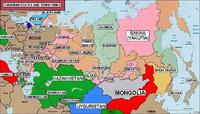Ural-Altaic Group
The Ural-Altaic languages constitute a hypothetical language family uniting the Uralic and Altaic language families. This hypothetical language family is also known as "Uralo-Altaic".
The Altaic hypothesis, as originally proposed by Matthias Castrén in 1844, included Finno-Ugric, Samoyedic, Turkic, Mongolic, and Tungusic. Subsequently, Turkic, Mongolic, and Tungusic were grouped together, on account of their especially similar features, while Finno-Ugric and Samoyedic were grouped as Uralic. Two contrasting language families were thereby formed, but the similarities between them led to their retention in a common grouping, named Ural-Altaic.
The Ural-Altaic family was widely accepted by linguists who studied Uralic and Altaic until well into the 20th century. More recently, they have almost universally rejected it, although for very different reasons. (See below, "Relationship between Uralic and Altaic".)








